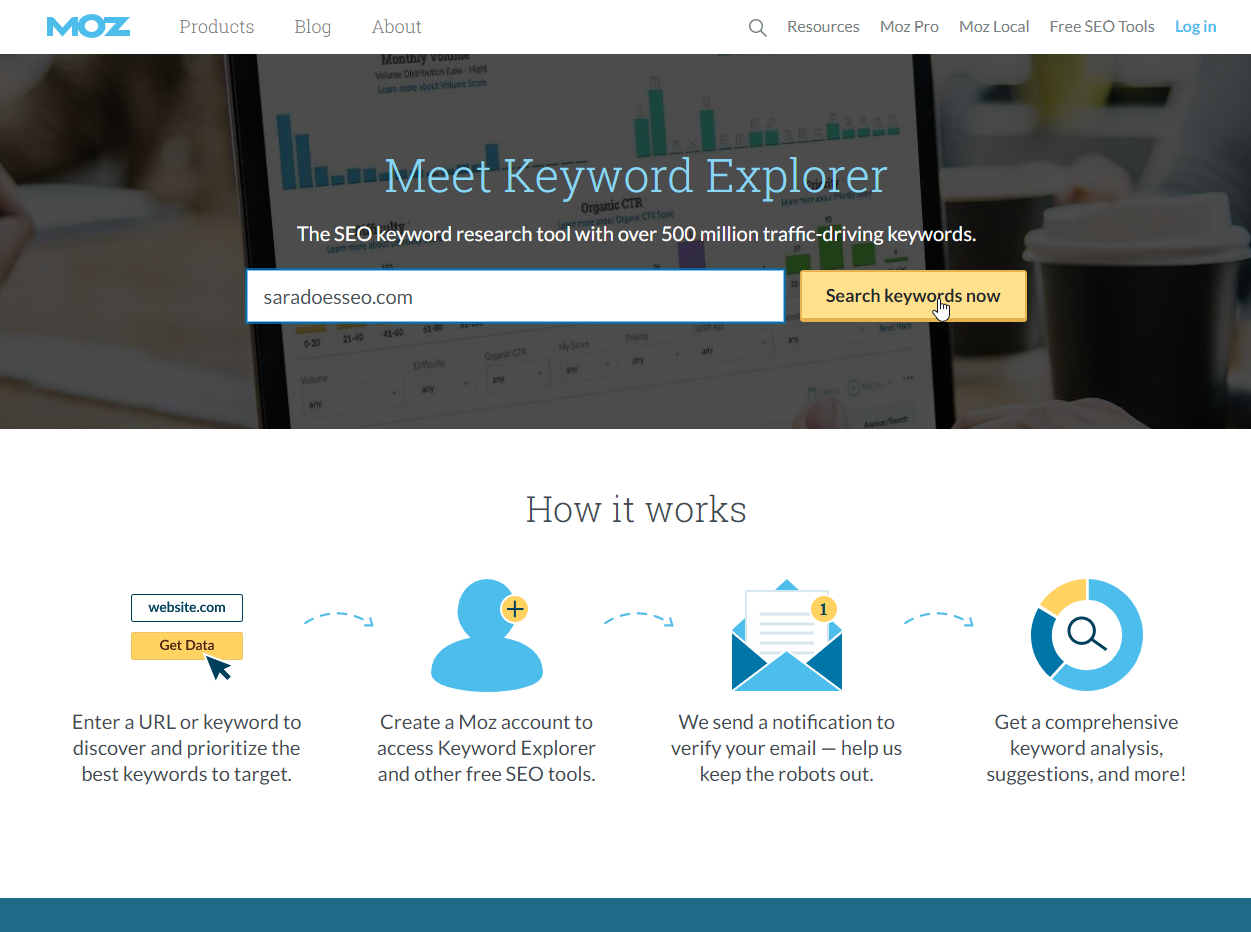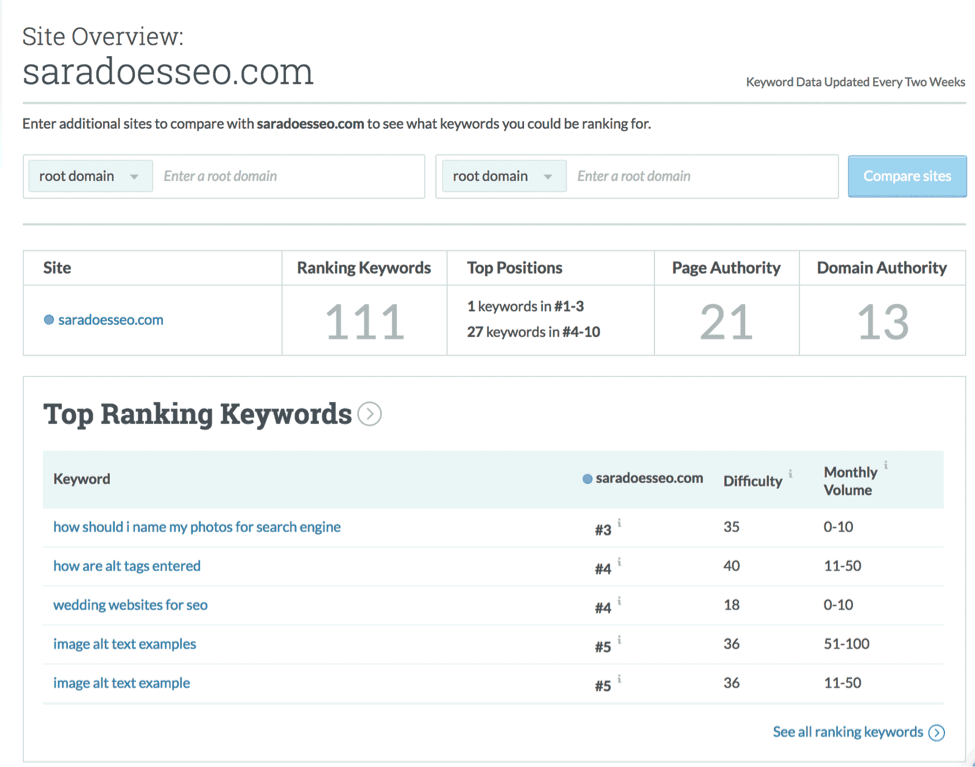
When you’re planning your marketing and business strategy for a new year, it’s an energizing time to dive into learning something new.
So if you haven’t ever worked on your website’s search engine optimization, now is a great time to start.
Fair warning, though: SEO can be a technical and overwhelming subject.
If you’ve ever thought, “I need to do some SEO” and then immediately got lost on where to start, I feel you.
Before you dive into the wilds of Google, let’s talk through an easy-to-follow SEO plan that will get you on your way to search engine success.
Step 1: Understand the SEO basics
Before jumping into SEO tactics, it’s helpful to understand how search engines work. Having a basic idea of how the machine operates makes it easier to figure out which tactics are worth pursuing and whether you’ll get the results you expect.
Search engines like Google make their money (billions of dollars, in fact) by selling ads at the top of search results. Therefore, making money depends on having lots of people use their search engine.
But Google only gets lots of searches if their search engine is useful to people. That means Google must return content that’s relevant to the user’s search. As a result, Google has spent decades refining its algorithm, adapting to the ever-changing needs of searchers and navigating the twists and turns of evolving web content.
And because Google’s algorithm is always changing, so is SEO. Therefore, an SEO tactic that may have worked years ago may be considered spammy these days. Make sure you’re getting your SEO advice from a recent source.
Okay, so what is SEO all about then?
In short, it’s making your website appealing to both search engines and your website visitors by creating content that’s highly relevant to the searcher’s intent and easily readable and navigable. This can be accomplished by creating high-quality, keyword-optimized content.
So how do we get there? Any good SEO plan should start with an understanding of where you are now.
Step 2: Understand where you rank now
It’s hard to follow directions if you don’t know where you’re starting from.
To see what keywords your website ranks for right now, I recommend creating a free Moz account and using their Keyword Explorer tool.
In the Keyword Explorer, type your website URL into the search box.

What you’ll see on the results is your Site Overview, including the number of keywords ranked. Make sure to click over to “See all ranking keywords” to see the top 50 keywords your site is ranked for.

Look through the keyword list to see any keywords you’d like to rank higher for and make note of them. You can also save the results by exporting them to a spreadsheet, so you can monitor your improvements later.
Step 3: Make a list of keywords you’d like to rank for
To start better optimizing your site and improving those rankings, you now need to brainstorm a list of keywords that are relevant to your website and business. These are the keywords you’d like to show up for when they’re searched on Google.
Here are a few places to look for inspiration:
- The Moz keyword list you just generated
- A competitor’s website—run their site through the Moz Keyword Explorer and see what they rank for too
- Your own website—go through each page of your site and look for phrases you use and possible keywords in the descriptions of your own services and projects
- Google suggestions—Try searching on Google for a few of the keywords on your list. See what Google suggests as you type, and what they list as “related searches” at the bottom of the search results.
- Customer reviews—look at what words customers use when they write reviews about your product or service
Once you have a big list of keywords, highlight or circle which ones are most important to you.
Step 4: Decide which page will target each keyword
This is the step I see skipped most often in articles about SEO.
They may tell you to “use your keywords”, but that might tempt you to just sprinkle the same keywords throughout your entire website.
But Google is looking for the pages on the internet that are most relevant and helpful for a specific search. Google only wants to return the most relevant page on your site for a given keyword. You’re never going to have multiple pages ranking for the same search (with the exception of your brand name).
Therefore, I highly recommend choosing only one page on your website that you want to optimize for each keyword you selected.
So make it clear which page on your site is the best result for a particular keyword by optimizing it well for that one word or phrase. That means you’re not just using the keyword “event planner” as much as possible throughout your site, but that you’re optimizing one page really well for “event planning services”.
A few examples:
- Optimize your “Peanut Butter Dog Treats” product page for the keyword “peanut butter dog treats”
- Optimize your “Interior Design” service page for “interior design in Austin, TX”
- Optimize your “Where to find a calligrapher” blog post for “where to find a calligrapher”
Step 5: Make a content plan
Making time to do the work for SEO is the hardest part. So to make sure you actually execute your SEO plan, commit a set weekly time to your content work.
This may mean better optimizing old content or writing new content to target keywords. Either way, plan out the work you want to do and give yourself due dates. You might want to set up a content calendar spreadsheet like the one I use:
You may be wondering where to start first? I’d recommend prioritizing your service and product pages first, then writing blog posts for high-volume searches, or searches that are highly relevant to your product (after all, there’s little use in getting traffic that won’t convert to business).
As you’re writing your content, I recommend following these SEO best practices for content optimization.
Step 6: Track your results
Put your head down and work on your website content for a few months. Keep in mind that it takes Google time to recognize the changes you’re making to improve the content on your website.
After about three months, check out a few metrics to see how you’re doing:
- Run your website through Moz Keyword Explorer again. Are you ranking for more keywords? Are you ranking higher?
- Review your website analytics. Are you getting more website visitors (especially Organic Search traffic over time)?
- Review your search presence in Google Search Console. Have your impressions risen? What keywords are you ranking for that could use more relevant content?
Make note of any pages or posts that are performing well and see if you can create more content around similar topics. Or note pages that are ranking in the top 8-20 to see if you can make further improvements to those pages to bump them into the top of the search results.
Step 7: Keep optimizing
There’s much more to SEO than just content. To help improve your site rankings you can also:
- Improve page speed: More and more, Google is taking user experience metrics like page load time into account. So make sure your site loads quickly.
- Use bullets and subheadings: Content that’s structured in a way that’s easier to read will keep people on your site for longer, improving your rankings.
- Condense your content: If you have multiple posts or pages competing for the same keyword(s), combine them into one better page. Google prefers one great page to several smaller pages.
- Build backlinks: The number of backlinks to your site from other high-quality websites is one of the biggest indicators of a high-authority website to Google. Take every opportunity you can to earn links to your site, whether that’s by creating local citations or by doing a link building campaign.
- Share your content: While sharing your content on social doesn’t directly impact your SEO, the more people that discover your content, the more likely you are to receive backlinks to your website. Don’t forget to come up with a solid content distribution plan.
As you can see, SEO is an ongoing process of website and content improvement, so don’t give up!
Keep generating keyword ideas, adding to your content plan, creating helpful content your target customers would love to find, and watching your site improve in the rankings.
Now that you’ve begun diving into what SEO can do for you, consider using a small business management platform to help you streamline your work process.




